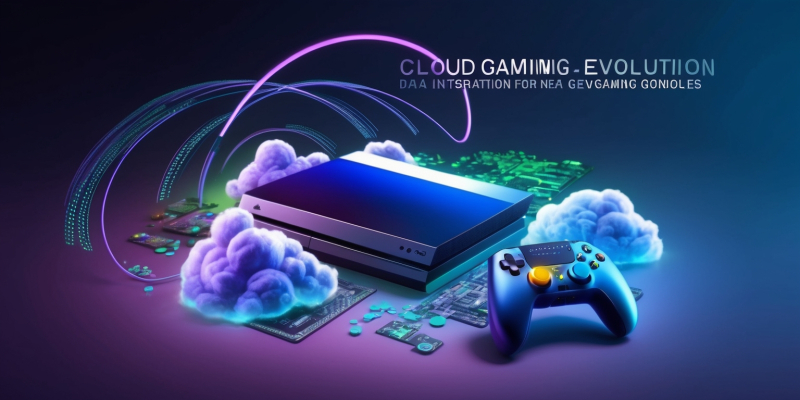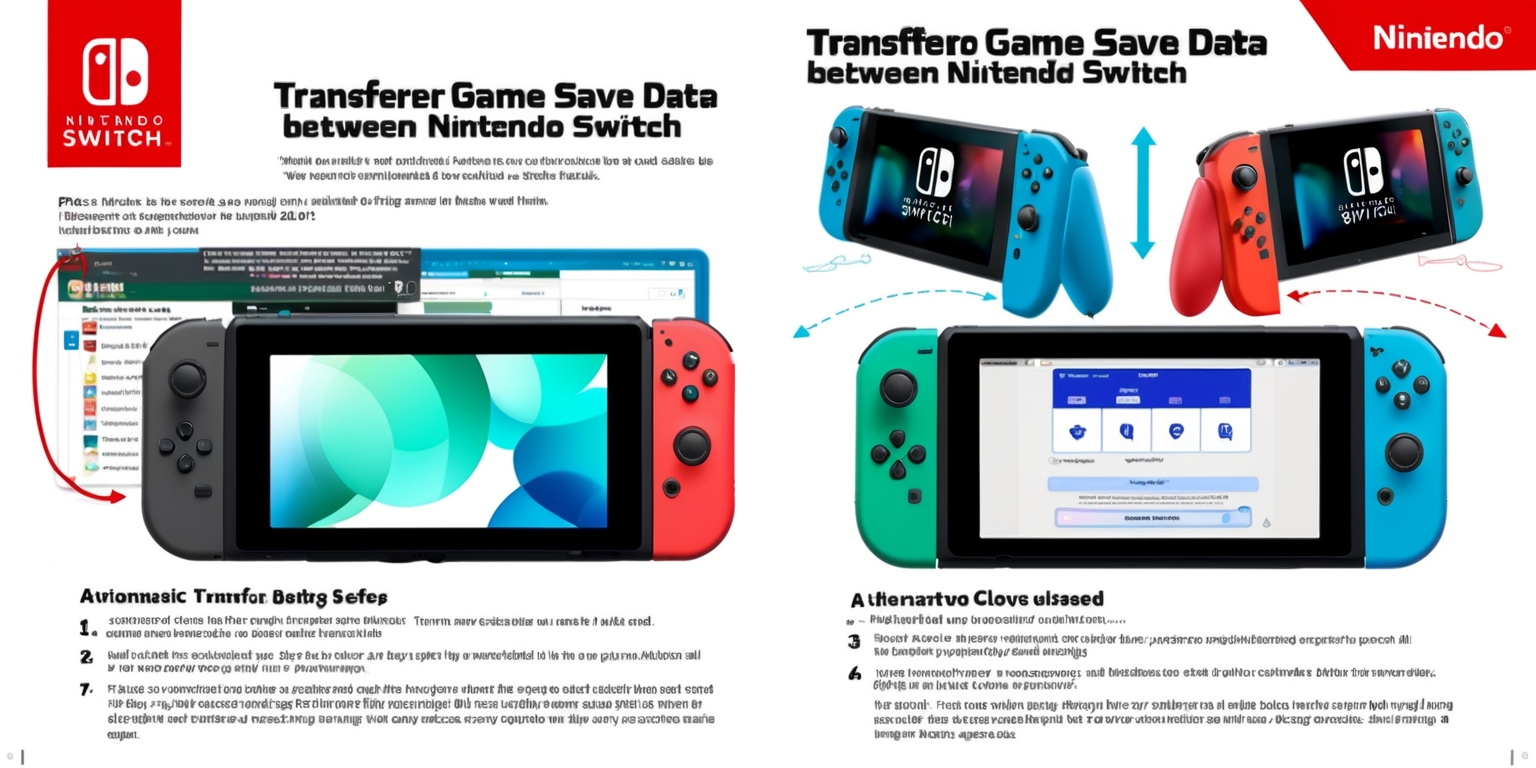Seamless Data Migration and Cloud Integration for Next-Gen Gaming Consoles
2025-08-08

The evolution from one generation of gaming consoles to another always comes with both excitement and a few challenges. When moving from the original system to a brand new device, gamers may encounter the delicate process of transferring save data. This journey, while seemingly straightforward, requires careful attention to detail in order to retain progress in beloved games. The instructions that follow are designed "to help you navigate every element of the" process, whether you are transferring immediately during setup or dealing with the situation later on. Each step has been crafted to maintain the integrity of your saved adventures, ensuring that every bit of progress is preserved with minimal fuss.
Initiating the Data Transfer Process
When you begin configuring your brand-new system, the initial step of transferring your save data is both logical and efficient. The console is designed to automatically import saved progress during the initial user and system setup, ensuring that your gameplay experiences continue seamlessly from where they left off. This immediate transfer simplifies the migration process, eliminating the need for manually searching for backup files. The design prioritizes ease of use, which is particularly beneficial for players who are eager to dive straight back into their favorite games without lengthy interruptions. The console automatically queues your game library for download, a process that not only retrieves saved data but also places games in order for installation after initial user configuration.
The Seamless Transfer During Initial Setup
At the start of configuring the new system, the direct transfer of user data is an integral component that benefits both casual and dedicated players alike. When you select the option to import data, the system efficiently pulls information from the original device through a secure process that aligns with your user account. This method means that save files tied to your account are automatically paired with the corresponding game downloads on the new device. Players do not have to perform extra steps for each game, as the system prioritizes the installation process by recognizing what saved data is associated with each title. The streamlined transfer sets the stage for a consistent gaming experience, making sure that progress is never lost during the transition.
Integrating In-Game Save Data and User Accounts
The operational backbone of this procedure rests on the connection between save data and user accounts. In this system, every game save is linked strictly to a user profile, ensuring that your accomplishments and progress remain intact regardless of any other account parameters such as cloud service enrollment. This implies that even without maintaining a continuously active online presence, … service subscription, your valuable in-game data is secure. The user account serves as the primary container for all saved information, thereby simplifying the migration process by decoupling it from more complex account systems. With an established account-based storage method, players benefit from an uncomplicated transition that does not interfere with any personal or account-specific settings, making the experience both secure and user-friendly.
Monitoring the Download and Auto-Import Queue

Once the new system gains access to your game library, a queue is automatically generated, managing downloads for each title that once housed your prior save data. This organized list allows for a systematic installation process where each game paired with saved progress is downloaded in a controlled manner. The design of this queue permits the cancellation or postponement of specific downloads, giving players a degree of flexibility over which games to prioritize as they get started. By regulating the order in which games are added to the system, the process ensures that games with critical save data are installed promptly. This capability is particularly valuable for individuals seeking to resume their progress without waiting for an entire library download to complete.
Leveraging Cloud Saves with Online Services
In scenarios where the initial system transfer process was skipped or requires a delayed setup, the cloud save feature provided by the online service becomes essential. This alternative method requires an active subscription, which opens up the opportunity to retrieve saved data from the cloud backup. The online service is engineered to store the most recent save files securely, providing a dependable location for backup data. Users are required to connect the device to the internet to allow the upload and subsequent download of these saved files. Once the console recognizes the saved data in the cloud, retrieving them becomes as straightforward as accessing a dedicated menu option. The cloud save system is a reliable alternative that reinforces data preservation in case of any interruption during the primary transfer process.
Navigation Through the eShop Interface
After setting up the new device, players can navigate to the eShop to redownload the games they wish to retrieve saved progress for. This process is carefully designed to integrate with the overall data transfer system. Within the eShop, the game titles appear with indicators that determine whether saved data is available from backup sources. By selecting a game and initiating its download, the console begins the process of linking the retrieved save files to the newly installed game version. Within these interfaces, an emphasis is placed on maintaining simplicity and user-friendly operations, ensuring that players who might be less technologically inclined can still complete the process without undue stress. The design of the eShop contributes to a holistic experience where both digital storefront navigation and data retrieval coexist seamlessly.
Understanding User Account Versus Cloud Backup Dynamics
The system distinguishes between data linked specifically to the user account and that which is stored in the cloud. This delineation provides an added layer of resilience in safeguarding your saved progress. When user data is transferred during the initial setup, all saved data is directly associated with the account in use. Conversely, in the absence of an immediate transfer, the cloud becomes the repository for saved files. Such duality ensures that no matter the method used, the integrity of your progress remains well-protected. Even in cases of subscription variations—such as not having a full online service plan—users can confidently rely on the account-based system to retrieve their game saves. This dynamic approach underscores the system's commitment to error mitigation and user satisfaction during data migration.
Emphasizing the Role of Active Online Subscription
For those who opt for the cloud backup method, the necessity of holding an active online subscription cannot be underestimated. It is this subscription that enables the cloud saving and subsequent restoration functionality, ensuring that your progress is safeguarded remote from hardware issues or delays in data transfer. Notably, the online service does not require any additional upgrades or packs beyond the standard subscription to access this feature. This requirement is built into the system to guarantee that all saved files available in the cloud can be seamlessly integrated upon request. While the process demands a secure internet connection and a properly maintained account, it provides a robust solution for gamers who may have encountered unexpected circumstances during or after setting up their new device.
Accessing and Downloading Save Data from the Cloud
The retrieval of game saves stored in the cloud is an intrinsically straightforward process once the user has linked the appropriate account to the new device. First, an individual must add the Nintendo Account associated with the original data to the system. Following this, players are directed to download the titles from the eShop, which ensures that any available cloud-saved data is automatically incorporated into the game. On occasions when the automatically included save file does not reflect the latest progress, additional steps are required. By highlighting the game icon and pressing the designated button for more options, a menu appears giving direct access to cloud-stored save files. From this menu, the option to update the saved data manually provides a second measure of security for preserving those precious in-game accomplishments.
Customizing the Retrieval and Restoration Process
For gamers who wish to exercise more control over how save data is restored on the new system, customization options are available directly from the game icon interface. Once a game is scheduled for download, players have the capability to interrupt the sequence by accessing additional options associated with the game title. This interface allows users to prioritize downloads and manage which game’s progress gets updated most urgently. By interacting with specific in-game menus, gamers can download their preferred version of saved progress, ensuring that the most current and accurate game state is restored. This degree of control offers significant advantages for individuals who may have encountered different versions of saved progress and need to select a particular instance. It emphasizes the system’s option for detailed user oversight during a traditionally automated process.
User-Centric Features for a Smooth Transition
The process of transferring and retrieving saved data is engineered with the final user's needs as the primary focus, placing a strong emphasis on both security and ease of navigation. The system prioritizes data integrity by ensuring all user-linked progress is retained without the user having to intervene beyond the initial steps. Additionally, the ability to manage downloads from the main menu affords a high degree of control over the restoration process. This approach ensures that even in scenarios where the original method of data transfer is bypassed, the fallback option remains intuitive and user-friendly. The emphasis on user experience is evident throughout the software interface, which is equipped with clear instructions and accessible menus for both novices and experienced players alike. Each feature is developed to ensure that the transition between gaming systems is smooth, reliable, and minimally disruptive.






